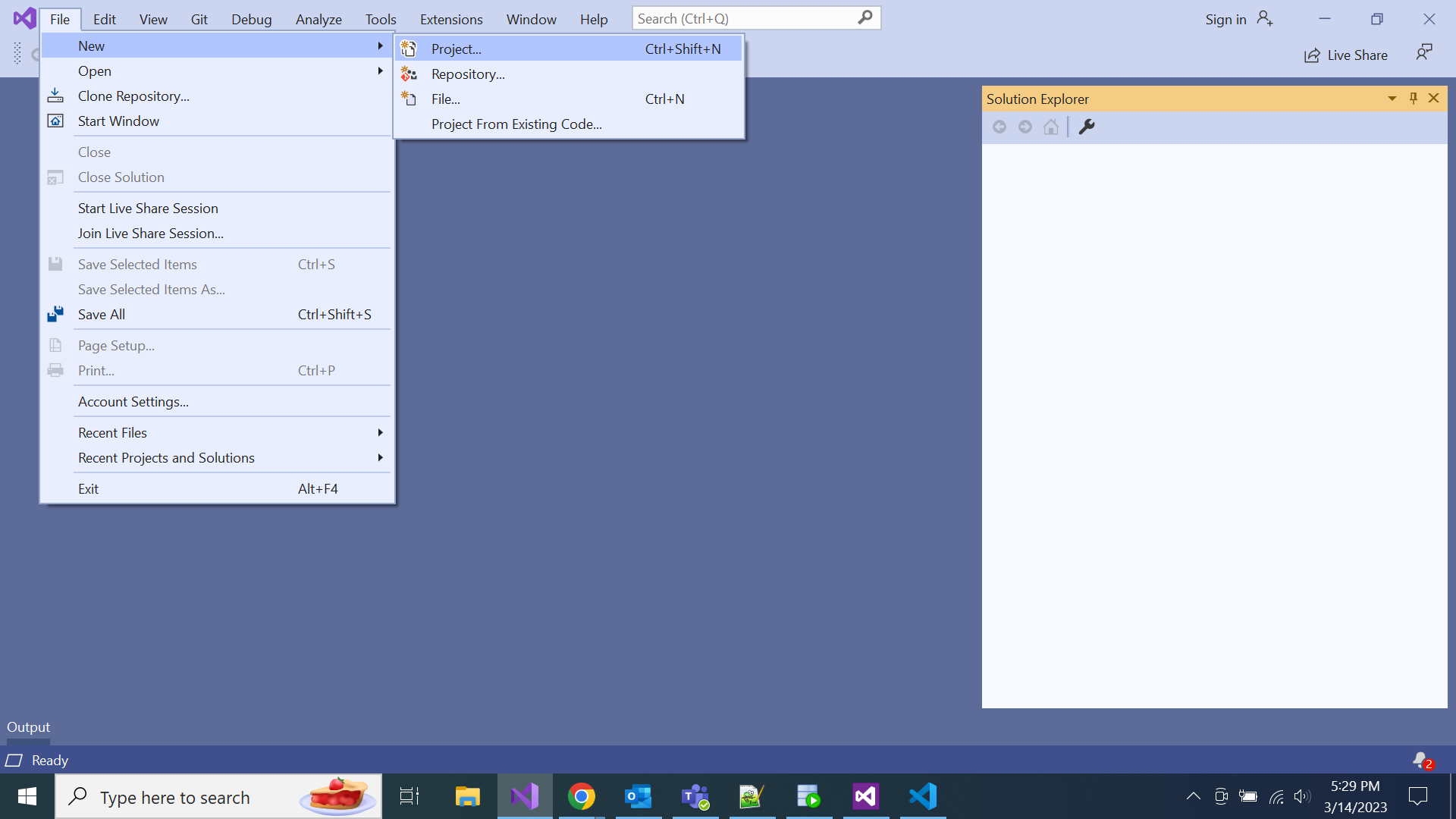Introduction to asp.net
By Content Medium | 31 Mar 2023 | 695 Words | 118 ViewsIntroduction to ASP.NET
Welcome to ASP.NET tutorial! ASP.NET is a net software framework developed by using Microsoft to construct dynamic websites, pages, functions and services. In this tutorial, we are going to cowl some simple principles and instructions of ASP.NET.
ASP.NET Version history
Here is a brief history of ASP.NET versions:-
| Version | Features |
| ASP.NET 1.0 (January 2002) | This was the first version of ASP.NET, which was released as part of the .NET Framework 1.0. It included Web Forms, which provided a way to create web applications using drag-and-drop controls. |
| ASP.NET 1.1 (April 2003) | This version of ASP.NET introduced many new features, including support for mobile controls, improved security, and enhanced caching. |
| ASP.NET 2.0 (November 2005) | This version of ASP.NET introduced many new features, including Master Pages, Themes, and the Membership and Role Management API. |
| ASP.NET 3.0 (November 2006) | This version of ASP.NET introduced many new features, including Windows Communication Foundation (WCF), Windows Workflow Foundation (WF), and Windows Presentation Foundation (WPF). |
| ASP.NET 3.5 (November 2007) | This version of ASP.NET introduced many new features, including AJAX support, LINQ, and the ADO.NET Entity Framework. |
| ASP.NET 4.0 (April 2010) | This version of ASP.NET introduced many new features, including dynamic data, routing, and the Chart control. |
| ASP.NET 4.5 (August 2012) | This version of ASP.NET introduced many new features, including asynchronous programming with async/await, WebSockets, and the Web API. |
| ASP.NET 4.6 (July 2015) | This version of ASP.NET introduced many new features, including HTTP/2 support, the Roslyn compiler, and the Identity 2.0 framework. |
| ASP.NET Core 1.0 (June 2016) | This version of ASP.NET was a complete rewrite of the framework, designed to be cross-platform and modular. It introduced many new features, including the ability to run on Linux and macOS, and a new lightweight and modular runtime. |
| ASP.NET Core 2.0 (August 2017) | This version of ASP.NET Core introduced many new features, including Razor Pages, SignalR, and improved support for Docker. |
| ASP.NET Core 2.1 (May 2018) | This version of ASP.NET Core introduced many new features, including HTTPS by default, improved middleware, and performance improvements. |
| ASP.NET Core 2.2 (December 2018) | This version of ASP.NET Core introduced many new features, including endpoint routing, improved client-side development, and OpenAPI integration. |
| ASP.NET Core 3.0 (September 2019) | This version of ASP.NET Core introduced many new features, including Blazor, a new web framework for building web UIs using C# and Razor syntax, and support for C# 8.0. |
| ASP.NET Core 3.1 (December 2019) | This version of ASP.NET Core introduced many new features, including improved support for gRPC, health checks, and Azure SignalR Service. |
| ASP.NET 5 (November 2020) | This version of ASP.NET is the latest version, which introduced many new features, including improved performance, minimal APIs, and support for .NET 5.0. |
Creating an ASP.NET Project: To create an ASP.NET project, open Visual Studio and pick "File" -> "New" -> "Project". In the "New Project" dialog box, pick "ASP.NET Web Application" and pick out a appropriate identify for your project.

ASP.NET Web Forms: Web Forms is a famous way to construct dynamic internet pages the use of ASP.NET. Web Forms permits you to create internet pages with server controls, which can be used to show information and receive consumer input. Server controls can be delivered to a net web page the usage of drag-and-drop from the Visual Studio toolbox.
ASP.NET MVC: MVC stands for Model-View-Controller. ASP.NET MVC is a light-weight and relatively testable net framework that follows the MVC graph pattern. In MVC, the mannequin represents the data, the view represents the person interface, and the controller handles consumer enter and updates the mannequin and view accordingly.
Data Access: ASP.NET gives countless methods to get admission to facts from a database. The most frequent way is to use ADO.NET, which is a set of training that permit you to engage with a database. Another famous way is to use an Object-Relational Mapping (ORM) device like Entity Framework.
Authentication and Authorization: ASP.NET offers built-in guide for authentication and authorization. Authentication is the technique of verifying the identification of a user, whilst authorization is the procedure of granting or denying get admission to to sources based totally on the user's identity.
Deployment: To installation an ASP.NET application, you can both install it to a internet server or post it to Azure. To set up to a internet server, you want to create a deployment bundle and then replica the archives to the server. To post to Azure, you can use Visual Studio or the Azure portal.
***Thanks***
